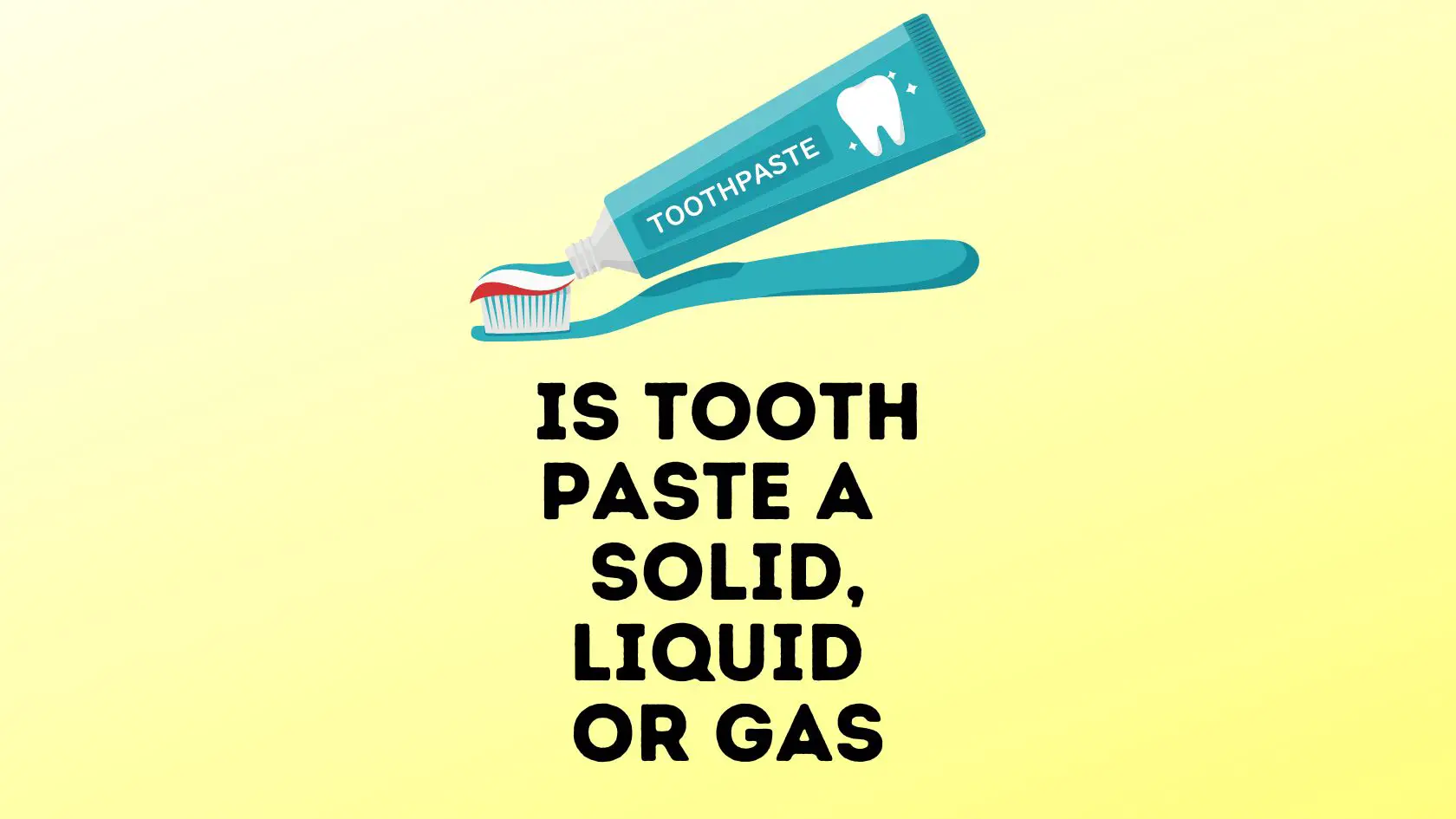
We all know toothpaste is a common household item, but did you know that there’s actually some debate over whether it’s a solid or liquid? In this blog post, we’re going to explore the answer to this question and find out once and for all what toothpaste really is. So, Is toothpaste a solid or liquid? The answer might surprise you!
Toothpaste is a gel or paste that are used to clean teeth and remove plaque. It is usually made from a combination of water, abrasives, fluoride, and surfactants. Abrasives help remove plaque and stains from teeth, while fluoride helps prevent cavities. Surfactants help the toothpaste spread evenly over teeth and create foam.
The Different Types of Tooth Paste
When it comes to toothpaste, there are four main types: paste, gel, powder, and liquid.
1. Paste: Paste is the most common type of toothpaste. It is a thick, creamy substance that is easy to apply to your toothbrush.
2. Gel: Gel toothpaste is a thick, jelly-like substance that can be difficult to apply to your toothbrush. However, it is effective at cleaning your teeth and helps to remove plaque and tartar buildup.
3. Powder: Tooth Powder is not as common as the other types, but it is a good option for those who have sensitive teeth or gums. It is also easy to apply and helps to remove plaque and tartar buildup.
4. Liquid: Liquid toothpaste is the least common type of toothpaste, but it can be a good choice for those who have sensitive teeth or gums. It is also easy to apply and helps to remove plaque and tartar buildup.
The Pros and Cons of Tooth Paste
Toothpaste is a popular hygiene product that is used to clean teeth and gums. It is usually a white, gel-like substance that is squeezed out of a tube onto a toothbrush. Toothpaste typically contains fluoride, which helps to prevent cavities.
There are both pros and cons to using toothpaste. Some of the advantages include that it can help remove plaque and bacteria from teeth, freshen breath, and Whiten teeth over time. Some disadvantages of toothpaste include that it can be abrasive on teeth if not used correctly, it can cause mouth irritation in some people, and it can be expensive.
When deciding whether or not to use toothpaste, consider your own needs and preferences. If you have sensitive teeth, you may want to avoid toothpaste with abrasives. If you are concerned about the environment, you may want to choose eco-friendly toothpaste. Ultimately, the best decision is the one that works for you and your oral health needs.
What are the Ingredients in Tooth Paste?
Toothpaste is a gel that contains fluoride, which helps to prevent cavities.
It also usually contains abrasives, such as calcium carbonate or silica, which help to clean the teeth.
Toothpaste may also contain other ingredients, such as preservatives, flavourings, and colourings.
How to Make Your Own Toothpaste
Toothpaste is a great way to keep your teeth clean and healthy, but it can be expensive. If you want to save money, you can make your own toothpaste at home.
Ingredients:
1/2 cup baking soda
1/4 cup water
1 teaspoon salt
1 teaspoon hydrogen peroxide
2 tablespoons glycerin
Peppermint extract (optional)
Directions:
1. Combine the baking soda, water, salt, hydrogen peroxide, and glycerin in a bowl and mix well.
2. Add the peppermint extract (if using) and mix again.
3. Store the toothpaste in a covered container in your bathroom.
4. To use, wet your toothbrush and dip it into the toothpaste. Brush as usual.
What State Of Matter Is Toothpaste?
Toothpaste is a viscous liquid, which means it has a thick consistency and is not as flow-y as water.
You can see this when you try to pour it out of the container – it doesn’t come out in a stream like water would.
The thick consistency is due to the small particles of the toothpaste (the abrasives) that are suspended within the liquid.
Is Toothpaste Solid Or Liquid And Why?
The answer to the question “Is toothpaste solid in liquid?” is both yes and no. It all depends on the ingredients in the toothpaste and how they interact with each other.
Toothpaste typically contains a number of different ingredients, including water, abrasives, fluoride, detergents, and sweeteners. These ingredients can be either solid or liquid at room temperature. When all of these ingredients are combined together, they can create either a solid or liquid mixture.
So, why does toothpaste sometimes appear to be solid and other times appear to be liquid? It all has to do with the interaction of the ingredients. If the ingredients are more likely to interact with each other (such as when they’re in a higher concentration), then the toothpaste will be more likely to appear liquid.
However, if the ingredients are less likely to interact with each other (such as when they’re in a lower concentration), then the toothpaste will be more likely to appear solid.
Is Toothpaste A Colloid Yes Or No?
The short answer to this question is yes, toothpaste is a colloid. A colloid is a substance that consists of particles that are suspended in another substance. Colloids contain particles that range in size from 1 nm to 1000 nm.
In the case of toothpaste, the particles are usually abrasive materials like calcium carbonate or silica that are suspended in a liquid base.
Toothpaste is a thick, viscous paste that is used to clean teeth. It is usually white or off-white in color, and has a minty flavour. Toothpaste is not a solid or gas; it is classified as a liquid.
Toothpaste Is An Example Of Which Fluid
Toothpaste is an example of a semi-solid fluid. It is classified as a semi-solid because it contains both solid and liquid particles.
The solid particles are abrasive, while the liquid component helps to bind the abrasive particles together.
Is Toothpaste An Element Or Mixture?
Toothpaste is a mixture. It is made up of different chemicals, including abrasives, fluoride, and surfactants.
Toothpaste is a mixture of many different chemicals, most of which are solids. However, it also contains water and other liquids, so it cannot be classified as a pure solid. Similarly, toothpaste is not a pure liquid because it contains small particles of solids. Therefore, the best classification for toothpaste is colloid.
What Type Of Fluid Is Toothpaste?
Toothpaste is a type of fluid known as a colloid. Colloids are suspensions of small pieces of solids in liquids. In the case of toothpaste, the solid particles are abrasive materials such as silica or calcium carbonate. The liquid portion of toothpaste is typically water, although it can also contain glycerin or other ingredients to help keep the paste from drying out.
Conclusion
Toothpaste is a solid, but it becomes a liquid when you add water to it. This is because the ingredients in toothpaste are designed to interact with water to create a foaming action that helps to clean your teeth. When you add water to toothpaste, the ingredients dissolve and become a liquid so that they can interact with each other and create the foaming action that cleans your teeth.

Hi, This is Lyn, I suffer from dental sensitivity for a very long time. PowerToothpaste.com is where I share my views of various toothpaste brands, along with tips on how to use toothpaste and what to look for when purchasing.
